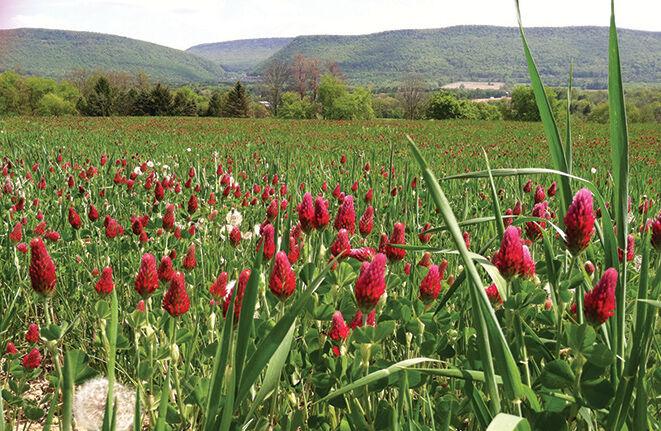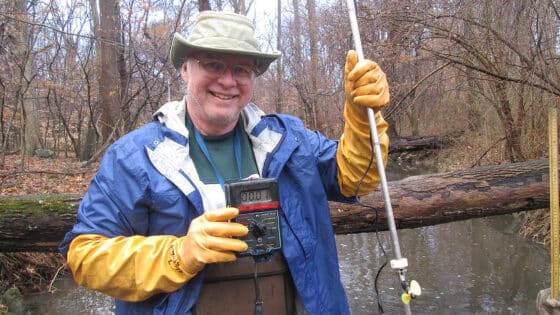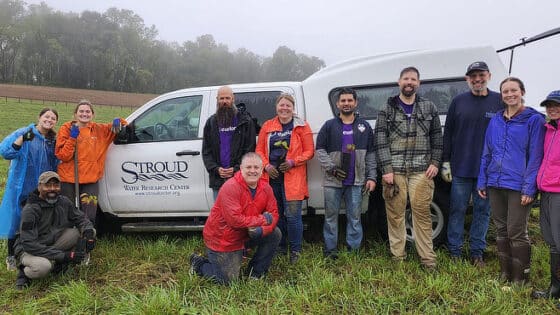
A winter cover crop of crimson clover in a farm field in Clinton County, Pennsylvania. It not only helps to fix nitrogen in the soil but can be used for forage. Photo: Lisa Blazure
Team members from The Robin L. Vannote Watershed Restoration Program at Stroud Water Research Center were recently interviewed by the Bay Journal for their article, “Soil Health Practices Increasingly Helping Farmers Hit Pay Dirt.”
“This soil health movement is big, growing, and critical,” said Lamonte Garber of the Stroud Water Research Center, a world-renowned freshwater research facility in Pennsylvania.
Instead of constantly pumping fertilizers and pesticides into worn-out soil, a more hands-off approach encourages an underground living ecosystem of bugs, worms, fungi, microbes and bacteria to make the soil healthier and less threatening to the environment.
The article continues with a brief history of the soil health movement, its potential to improve water quality in Chesapeake Bay, and its growth in states surrounding the bay.
“I just feel this is the future of agriculture and this is where we need to be at a national level,” said Lisa Blazure, coordinator of a newly created soil health position at the Stroud Water Research Center in Pennsylvania.
Read the full article on the Bay Journal website.



